The Sea Blues Leftover Sock Yarn Socks used the 4 yarns that were used in the Blue Fair Isle Leftovers Socks with the addition of a 5th yarn. One was a commercial sock yarn and the other four yarns were indie hand dyed yarns. As is often the case with remnants of sock yarn the tags and labels have been lost or mislaid or have ended up in my bag of labels from previous projects. If I’d been sensible, I’d have tied a piece of the yarn around the label or to the tag, but I wasn’t really thinking ahead.
With these socks my aim was to knit from the lightest toned colour to the darkest with the colours of the ocean in mind. I used narrow stripes to blend the colours together and camouflage the transition between the wider stripes. My inspiration for these socks came from a photograph of the ocean that I took when we were walking on the beach St Ninian’s Tombolo which was close to where we stayed on Shetland.
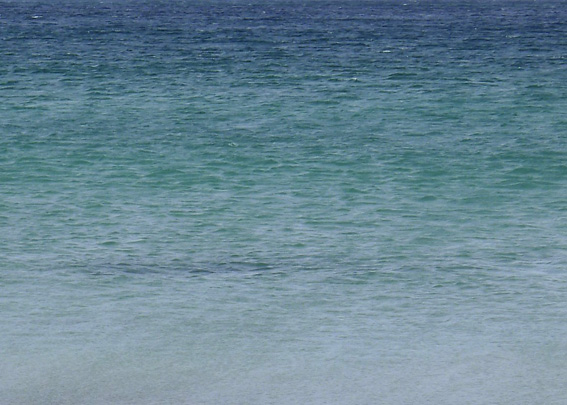
What do you like to do with all the precious little balls of leftover hand dyed sock yarn? Anyone who loves hand dyed sock yarn also knows this is not the budget option for knitting socks. So it is utterly impossible to ever throw these little treasures away! I’m always thinking of ways of using up every single gram of hand dyed. Great options include a Mitred Square Scarf or a Mitred Square Blanket. Mitred squares are excellent because you can use up every little bit of yarn, if you run out before the square is finished, just use a different yarn to finish the square.
The Sea Blues Leftover Sock Yarn Socks used a total of 74 grams of sock yarn. This wasn’t equal amounts of yarn of each colour as I used a little more of Yarn A for knitting the cuff and more of Yarn D for turning the heel. After knitting a pair of socks I normally have about 29 grams of yarn left over but if I’ve knit fingerless mitts or a sock head hat I often have considerably more leftover yarn. I used these lovely leftovers to knit 2 pairs of socks. These ones and The Blue Fair Isle Leftovers Socks.
All of these yarns were from my stash of leftover sock yarns some had been used for knitting socks others had been used for knitting clothing for Sasha Dolls over the years. I had larger amounts of some than others.
I used 5 different sock yarns for these socks:
- Yarn A – Light Colour (Hand dyed by an Indie dyer from the US)
- Yarn B – Medium Light Colour (Hand Dyed by Ripples Crafts)
- Yarn C – Medium Colour (Hand Dyed by Flamboyance Yarns who is no longer dyeing yarn)
- Yarn D – Medium Dark Colour (Claudia Hand Painted Sock Yarn)
- Yarn E – Dark Colour (Trekking XXL Sock Yarn a commercial sock yarn)
This isn’t so much a pattern as a description of what I did. I used 2.75 mm bamboo double pointed needles.
Cuff:
- Using Yarn A cast on 60 stitches with a 3.25 mm needle then join into the round being careful not to twist the stitches using 2.75 mm bamboo double pointed needles.
- Work 15 rounds of knit 1, purl 1 rib.
Leg:
I knit 48 rounds for the leg in the following stripe order.
- Yarn A: knit 6 rounds
- Yarn B: knit 3 rounds
- Yarn A: knit 3 rounds
- Yarn B: knit 3 rounds
- Yarn A: knit 3 rounds
- Yarn B: knit 18 rounds
- Yarn C: knit 3 rounds
- Yarn B: knit 3 rounds
- Yarn C: Knit 3 rounds
- Yarn B: knit 3 rounds
Strong Heel:
The shaping for the strong heel combines the heel flap and the gusset shaping. This works very well for a pattern like this where I wanted a smooth transition of stripes as the heel and gusset blend into the overall design of the sock rather than being an obvious heel like the standard heel flap/heel turn/gusset.
The Strong Heel was worked over 25 rounds in the following stripe order:
- Yarn C: 18 rounds
- Yarn D: 3 rounds
- Yarn C: 3 rounds
Instructions for the Strong Heel:
Needles 1 and 2: Are the Instep stitches
Needles 3 and 4: Heel and gusset stitches – these are the needles on which the increasing takes place. I find it helpful to place a marker after the m1, on needle 3 and before the m1, on needle 4. This just makes it quicker to count how many stitches are on the needles.
- Round 1: Needles 1 & 2: k; Needle 3: k1, m1, k to end of needle; Needle 4: k to last stitch, m1, k1
- Round 2: Needles 1 & 2: k; Needle 3 & 4: k
- Repeat rounds 1 and 2 until needles 3 and 4 each have 28 stitches on them.
Change to yarn D to work the heel turn.
Heel Turn:
Turn work to begin heel turn on a wrong side row. Only working on Needles 3 and 4.
- Row 1: Needle 4: sl1, p to end of needle; Needle 3: p1, p2tog, p1, turn
- Row 2: sl1, k3, ssk, k1, turn
- Note that there will be a small gap between the working stitches that form the heel turn and the unworked heel stitches.
- Row 3: sl1, purl to within 1 st of gap, p2tog, p1, turn
- Row 4: sl1, knit to within 1 st of gap, ssk, k1, turn
- Repeat rows 3 and 4 until all side stitches have been worked, and there are 15 stitches on needle 3 and 15 stitches on needle 4. Should end on a completed row 4.
Foot:
I did a total of 43 rounds for the foot. There is some leeway with this as after the final 8 rounds using Yarn E, I continue using Yarn E for the Classic Toe. You could easily do less rounds of Yarn E at this point without spoiling the overall look of the sock.
- Continue with Yarn D: 2 rounds
- Yarn C: 3 rounds
- Yarn D: 18 rounds
- Yarn E: 3 rounds
- Yarn D: 3 rounds
- Yarn E: 3 rounds
- Yarn D: 3 rounds
- Yarn E: 8 rounds
Classic Toe:
- Round 1: Needles 1 & 3 – knit to last 3 stitches, k2tog, k1; Needles 2 & 4 – k1, ssk, knit to end of needle.
- Round 2: Knit
- Repeat rounds 1 and 2 until there are 4 stitches on each needle (16 stitches).
Finishing the Toe:
- Making sure that the toe stitches align horizontally with the heel, slip the stitches from needle 4 onto needle 1 and the stitches from needle 3 onto needle 2. Eight stitches on each needle.
- Graft the toe stitches using kitchener stitch.
Finishing:
Weave in all the loose ends. Then I soak the socks in a basin with a little wool wash for about 20 minutes so the yarn completely relaxes. Rinse the socks. Place them on a towel and roll it up and squish to remove excess water. Finally, I put the socks onto sock blockers and pat them into shape. Allow to dry.
These are a gorgeous addition to my sock drawer!
We gave up waiting for a dry day to photograph these socks and in the end, the day we expected to be dry, rained when we reached Crawfordsburn Country Park, so I opted to stand on the wet wooden bench, which seemed the least worst option!
I’d love to see what you do with your leftover hand dyed sock yarn. Imagine how beautiful these socks would be if instead of going from light to dark or dark to light, you went from gold to claret to aubergine or spring green to sky blue to indigo? Gosh, the different socks could be amazing. Time to go and rummage in my stash again!

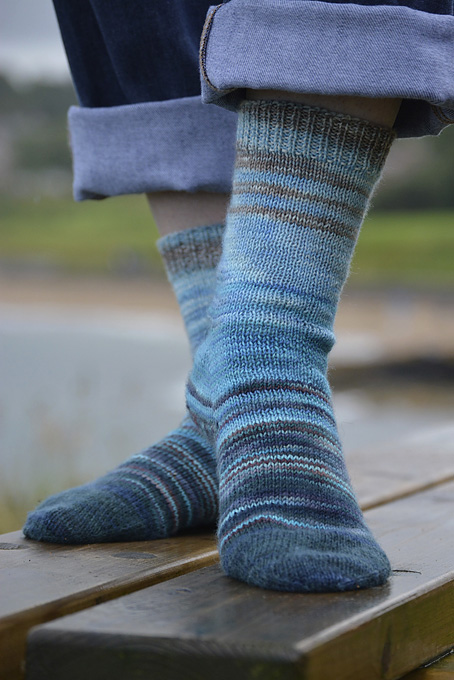
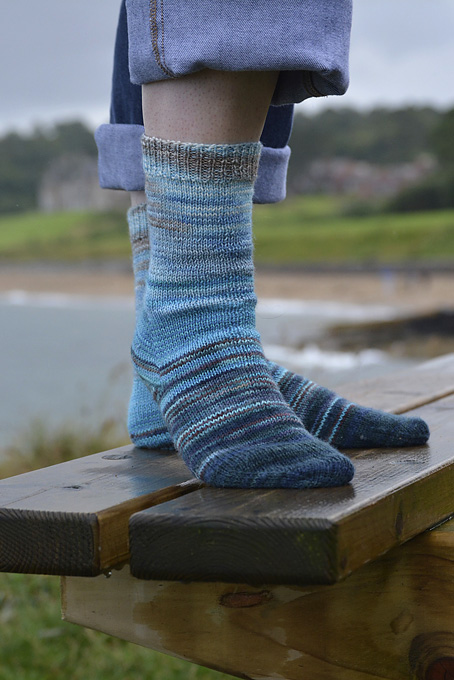
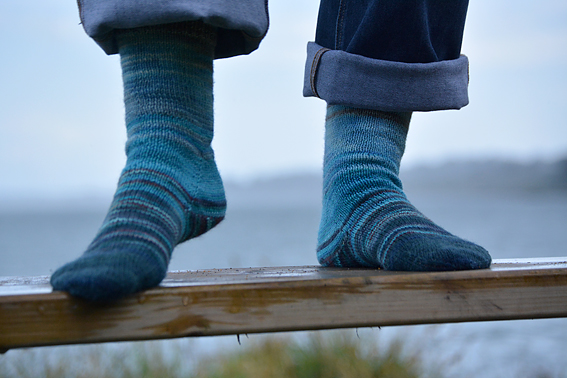
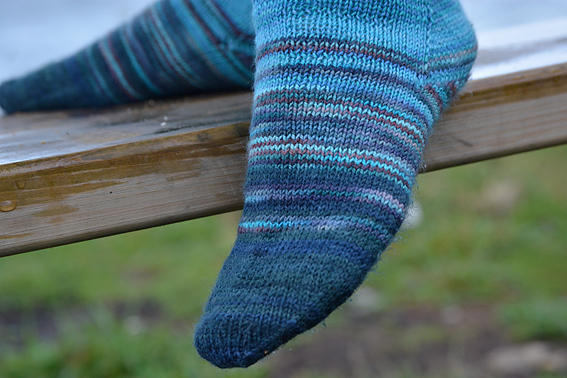
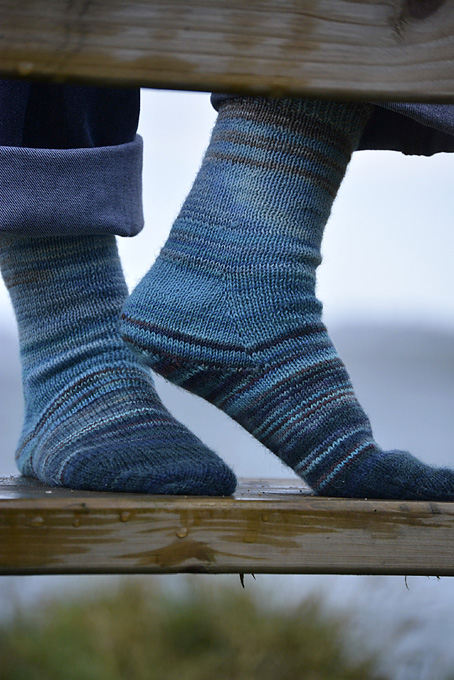
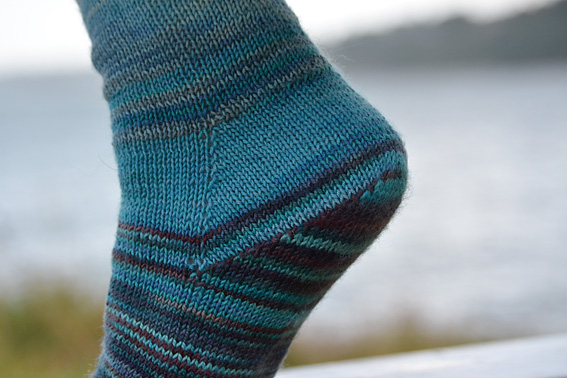
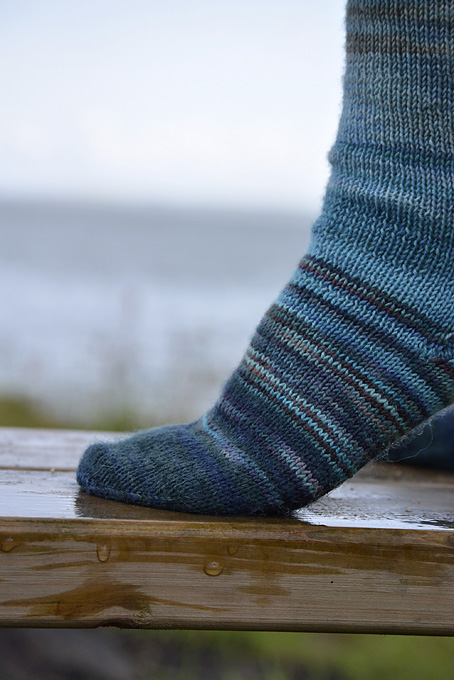
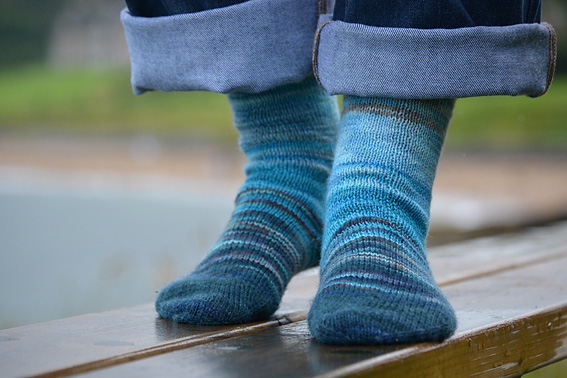
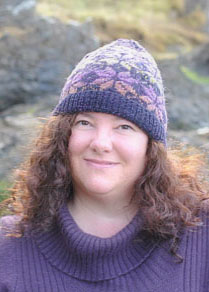
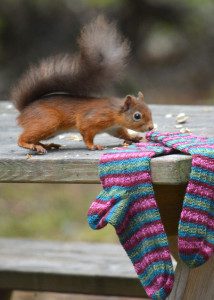
I just ordered some yarn for Christmas socks for my daughters. Then I noticed your blog on the banner of the store and JUST WOW! You are an so inspiring. Then I saw this post and was overwhelmed. I have been to the overlook on this beach, but it was a rainy day so did not go across the strand. How I wish it had been a sunny day! The socks say it all. Have you been to Wool Week on Shetland?
Hi Deborah, thank you for your lovely comment. We were very lucky to be able to take so many photographs of the red squirrels when we visited the Cairngorms in Scotland. The squirrels were so much fun to watch. I would love to visit Wool Week, but when we visited Shetland, we were celebrating our 50th birthdays and our wedding anniversary, so that kind of settled the week we were going. The organisers produced a Shetland Wool Week Magazine for 2015 and I am hopeful that a new one will be produced for 2016 too. It gives a wonderful sense of what Wool Week is like. Our trip, had to be fun for my husband as well as myself, so the knitting was blended into our holiday! Many thanks, Nicolette
These socks are so beautiful, and love the idea of trying to make them like the photo of the sea, just lovely! Your work is so inspirational!
Thank you so much for your kind comment. I love choosing a colour theme as inspiration when I’m going through my box of leftover sock yarn.